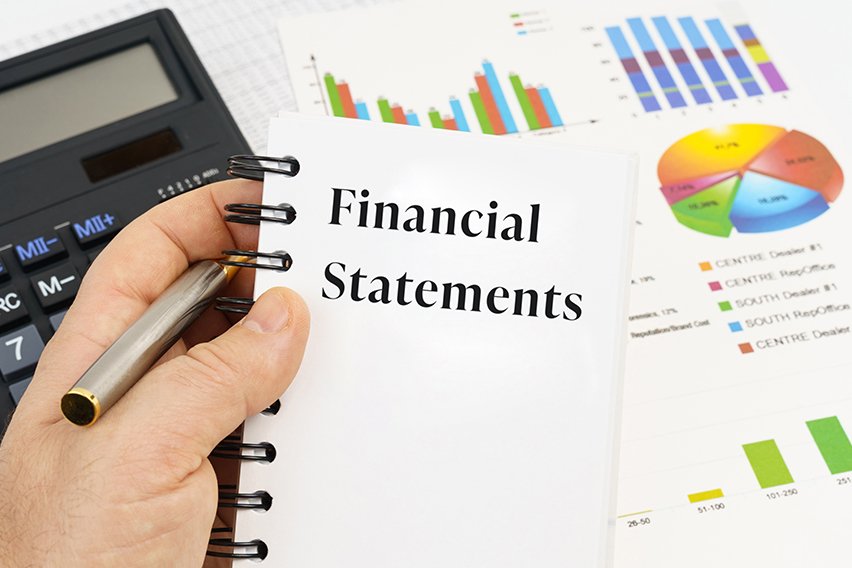Keep Track of Expenses and Profits: A How-To Guide

Want to know how to keep track of expenses and profits in your small business? It starts by understanding and mastering your cash flow. There are a few strategies to keep top of mind when tracking business expenses and income so you keep from going in the red. Here’s our How-To guide.
Here’s What We’ll Cover
NOTE: FreshBooks Support team members are not certified income tax or accounting professionals and cannot provide advice in these areas, outside of supporting questions about FreshBooks. If you need income tax advice please contact an accountant in your area.

Why Does Tracking Business Expenses Matter?
Tracking business expenses is an essential part of being a responsible and savvy business owner. By tracking your spending, you can identify areas where you might be able to save money and improve your cash flow.
Cash flow measures the total amount of money being transferred in and out of a business. Money coming in as a result of a business’s activities, such as business income, government grants, and bank loans, is considered to be cash inflows. Any money going out, such as building and equipment leases, payroll and travel, are classified as expenses.
Cash flow matters to a company’s finances because it allows a business owner to know if the company’s income exceeds its business expenses (in other words, if the company is profitable). If so, then the company is considered to have a ‘positive’ cash position.
Sometimes when a company’s business expenses exceed its income, it’s not a surprise. This is a common situation for a lot of startups in their first couple of years of business as they need to establish themselves in the marketplace. But regardless of the situation, small business owners need to set themselves up for success by properly tracking profit and business expenses right from the outset.
How to Track Profits
You’re in business to make profits, and one of the most important documents that allows you to do that is an invoice. But it’s surprising how many companies don’t put enough thought into what goes into them or even bother following up later once payment is due.
Have you ever received a call from a vendor asking about an invoice from six months ago? Imagine that same vendor has the same problem with a number of clients. That means money isn’t coming in as planned, and now that company will have a negative cash flow as a result.
A properly designed invoice with all the right information lessens the chance of it being delayed for processing or getting lost in the shuffle.
Send Clear, Professional Invoices
Your invoice should not be left open to interpretation. It should be clear and include:
- Date
- Invoice Number
You generate this number, in case your client’s accounting department needs to find your invoice later.
- Description of Services or Products Provided
Be detailed. List exactly what was provided.
- Client’s Purchase Order Number
A P.O., or Purchase Order, is not necessarily required for every transaction, but when it is, it is generated by the client when he/she first requests your product or service. Referring to it here shows the client’s accounting department that your services were previously approved. This helps the payment process proceed without delay.
- Your Company’s Contact Information
This means full contact name, address, phone number, tax information (if applicable) and email address. Surprisingly, this important information is often incomplete, meaning a delayed payment.
- Total Cost and Payment terms
Net 30 days, net 60 or net 90? When exactly do you expect to get paid? Perhaps you have an agreement with the client on payment terms, but the client’s accounting department is unaware of it? Make sure it’s on the invoice, and that you also follow up once that due date rolls around if payment has not yet been received.
Generate a “Profit and Loss” Report
A P&L, or Profit and Loss Report is an important statement that details how much your company earned in revenue and spent on business expenses within a set period of time. A company typically generates a P&L report in intervals, perhaps monthly or quarterly – or even yearly, depending on its needs.
By generating a “Profit and Loss” Report, management can better plan its future spending. For instance, perhaps the P&L report indicates exceptionally high supplier costs for a key ingredient in your product, indicating it’s time for a new supplier. Or that your increasing rent is a sign to plan long term for a new place to operate out of. Consider a “Profit and Loss” report a tool that can help you determine how to save money.
How to Track Expenses
Tracking business expenses may seem daunting at first, but knowing where to start can help you get organized and stay that way.
Open a Business Bank Account
Opening a separate business bank account is the best way to separate your personal and business finances. Open separate business accounts and ensure you run all business expenses through the business account. When you keep operating expenses separate from your personal spending, keeping track of business income and expenses is easier and you’ll be organized at tax time.
Each month, you’ll receive a bank statement detailing all income and expenses that went through the business account during the month. Use the statement to reconcile income and expenses recorded in your accounting software to the bank statements. This reconciliation process helps ensure you don’t miss any expense transactions or lose money on missing deposits or bank errors.
HOW TO CHOOSE A BUSINESS BANK ACCOUNT
When deciding on a bank account, consider your needs. Today, you will be most likely paying most of your expenses digitally through your business bank account, so consider just how many business transactions you are going to have in a given month. What will the bank charge you? Typically this will depend on the bank you go with but don’t get distracted by rewards or other incentives that are designed to get you to sign up. Consider them, sure, but decide if they are worth the extra costs involved or if you are sacrificing some other benefits.
Research a number of banks and compare their monthly charges, as well as any extra transaction charges that could put a dent in your profitability. Consider whether the bank can connect to your accounting software, which makes it easy to track business expenses.
And ask yourself, can this bank help you in the future with loans or extra credit if you need it?

Open a Business Credit Card
You might also want to open a business credit card in addition to business bank accounts.
Many small business owners use business credit to cover all business purchases while building business credit. As long as you pay off the balance each month, charging business expenses to a business credit card can help you track expenses easily while earning cash back or other rewards.
Categorize Your Business Expenses
We all know business expenses have a way of adding up, and although your business bank account is a good resource for determining your total spending, categorizing business expenses is also very helpful. This is because categorizing your expenses will later help you determine exactly where you are spending your money and help you prepare your small business for tax time.
You can get as micro as you need, but business expense categories in your accounting software should include:
- Advertising Expenses
- Business Vehicle(s)
- Payroll
- Employee Benefits
- Meals
- Office Expenses
- Office Supplies
- Professional Services
- Rent, Utilities & Phone
- Travel Expenses
- Sales Tax
Budgeting for each category will also manage expenses because it will provide a guideline for you and your staff when it comes to spending money. Adjust your small business expenses accordingly as your company grows.
Track Your Small Business Expenses by Client
One thing to consider is that some clients can actually cost you more money than others. Let’s say you are in charge of a home cleaning business. Every month, your manager reports that the same three clients call to say they are dissatisfied with the job and won’t pay unless they get a significant discount next time. Or perhaps an out-of-state client requires too much face-to-face time, resulting in extra travel every time that client books a job.
Tracking your small business expenses by client helps you to see which clients cost more to do business with, and helps you to strategize for the future. Maybe it’s time to lose some clients and concentrate on the ones who don’t need so much hand-holding or maybe just rethink your pricing structure.
Tips for tracking expenses
You can track business expenses by client easily with the help of accounting software or an expense tracker app.
Expense tracker apps connect to your bank accounts and track expenses. Each time potential tax deductions hit your account, the app will ask whether the transaction belongs in personal expenses or is a business expense.
Accounting software can also automate tracking expenses by connecting to the separate bank account you set up for your business. Your accounting software can allow you to scan receipts and digitally store receipts and expense reports, so you don’t have to hold on to paper receipts.
Whether you use an accounting system or expense trackers, these tools make expense tracking easy and convenient while ensuring you don’t miss out on any valuable tax deductions.
Also Read: Small Business Expense Tracking App
Other Questions Related to How to Keep Track of Expenses and Profits:
What Is the Formula for Profit?
How Much Petty Cash Should I Keep on Hand for Expenses?
What Is the Formula for Profit?
In small businesses, profit is a financial gain. It is a dollar figure calculated by taking the total revenue and subtracting the total expenses. If the figure is positive it is considered to be ‘profit.’ If the figure is negative, then that is considered to be a ‘loss.’
You can find your profit on your company’s financial statements—it might be called net income and should appear at the bottom of your income statement. Keeping an eye on business expenses and profit will help you monitor your business’s financial health and potentially attract a business partner (if you want one).
How Much Petty Cash Should Small Businesses Keep on Hand for Expenses?
How much petty cash you keep on hand really depends on the size of your company and the amount of staff you have. If you’re a small business, without company credit cards, $300.00 is probably enough to carry you from month to month without having to make a withdrawal from your bank account every time you want to buy lunch for your employees or cover other small business expenses.
You don’t want to keep large amounts of cash around, for obvious safety reasons. However, if you keep petty cash on hand, make sure you’re keeping track of who is taking money from your petty cash fund and how it’s being spent.
Ensuring your small business has clear policies on keeping business receipts and saving all your receipts in your accounting software will make tracking your business expenses easy and ensure you don’t miss out on any expense deductions at tax time.
About the author
Janet Berry-Johnson, CPA, is a freelance writer with over a decade of experience working on both the tax and audit sides of an accounting firm. She’s passionate about helping people make sense of complicated tax and accounting topics. Her work has appeared in Business Insider, Forbes, and The New York Times, and on LendingTree, Credit Karma, and Discover, among others. You can learn more about her work at jberryjohnson.com.
RELATED ARTICLES


 Tax Liability: Definition and Calculation Guide
Tax Liability: Definition and Calculation Guide How to Write Off a Car for Business: A Tax Guide
How to Write Off a Car for Business: A Tax Guide How To Forecast Financial Statements: Balance Sheets, Income Statements
How To Forecast Financial Statements: Balance Sheets, Income Statements Why Are Financial Statements Important?
Why Are Financial Statements Important?